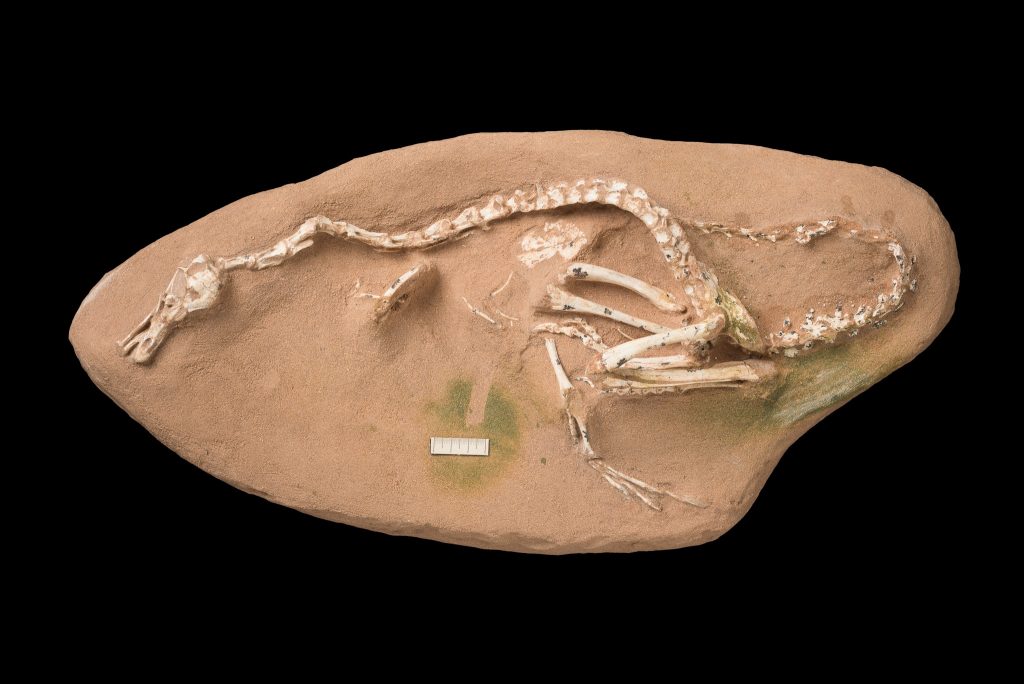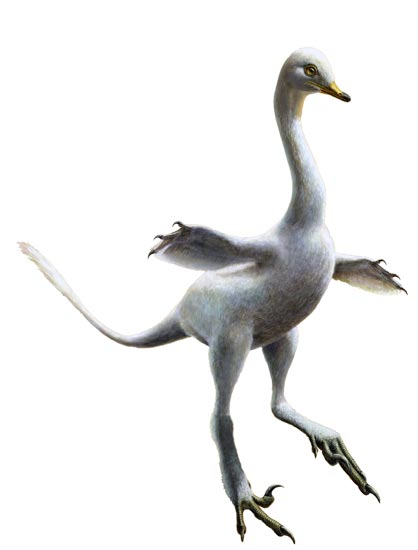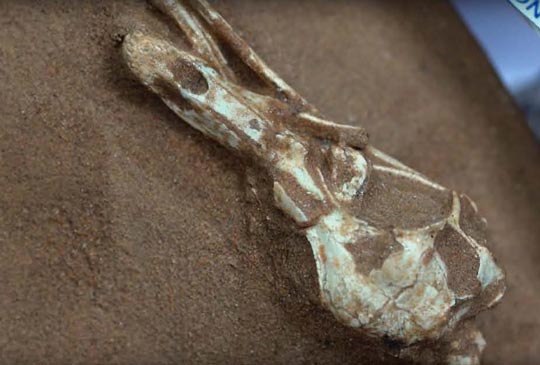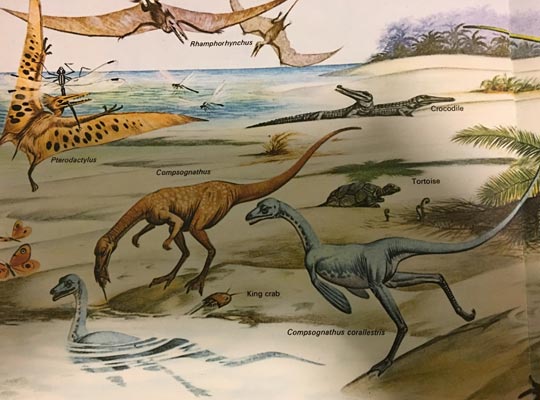The Remarkable and Diverse Maniraptora (Halszkaraptor)
Raptor That Took to Water (Halszkaraptor escuilliei)
A fossil that had been removed illegally from Mongolia has revealed a remarkable twist in the evolution of theropod dinosaurs. It seems that during the Late Cretaceous, one little meat-eating maniraptoran evolved a long, swan-like neck and flippers for forelimbs and took to the water. It may have even waddled around like a duck. This latest discovery, written up in the journal “Nature”, demonstrates the remarkable diversity within maniraptoran dinosaurs.
Several different kinds of “raptor-like” dinosaurs evolved adapting to different ecological niches, palaeontologists have known about dwarf forms and giants, meat-eaters adapting to herbivory and the evolution of powered flight within the maniraptoran lineage. This newly described dinosaur adds to this diversity and helps to demonstrate the flexibility of the Theropoda bauplan. As well as the cursorial forms (fast runners), here is one little maniraptoran showing adaptations for an aquatic lifestyle.
Named Halszkaraptor escuilliei, it may have been a forelimb-propelled, pursuit diver, hunting and catching fish in a similar way to living birds (to whom Halszkaraptor is distantly related), such as Auks and Penguins.
A Reconstruction of the Newly Described Halszkaraptor escuilliei
Picture credit: Lukas Panzarin
Surprising Maniraptoran Dinosaur from Southern Mongolia
The fossil, consisting of a single slab with a partially exposed, nearly complete and articulated skeleton, heralds from Ukhaa Tolgod in southern Mongolia. The Upper Cretaceous sandstones (Campanian faunal stage), have been pillaged by fossil poachers for decades and Halszkaraptor was illegally excavated and circulated via the black market, passing through the hands of several private collectors.
In 2015, a French collector acquired the specimen and contacted the Royal Belgian Institute of Natural Sciences, the fossil was subsequently examined and studied in detail. The European Synchrotron Radiation Facility (ESRF) in Grenoble was used to ensure that the bizarre fossil was not a forgery, that it was not a “chimera”, a combination of fossils that had been put together in order to fetch a better price when it was illegally sold. The detailed X-ray phase-contrast synchrotron microtomography identified the specimen as genuine and provided palaeontologists with data on some of the bones that remained embedded in the matrix.
The research team concluded that this was a new type of dinosaur, one that would have been perfectly at home in the water.
The Holotype Fossil of H. escuilliei

Picture credit: Thierry Hubin/Royal Belgian Institute of Natural Sciences
Palaeontologist, Pascal Godefroit of the Royal Belgian Institute of Natural Sciences and a co-author of the scientific paper stated:
“We always thought dinosaurs were terrestrial, but now it is very clear for the first time that there were also swimming dinosaurs.”
75 to 71 Million Years Old
The research team, which also included Phil Currie (University of Alberta), identified a number of anatomical characteristics in common with aquatic predators such as more teeth, including long, tube like teeth at the front of jaw which are typical of piscivores. In addition, the scientists discovered a neurovascular mesh inside the dinosaur’s snout that resembles those found in modern crocodiles. Halszkaraptor’s hands, with an elongated third finger, probably had flippers, with which it manoeuvred in the water like a penguin, using its long neck to grab prey in a surprise attack. Based on the hip structures, the palaeontologists think it walked upright like a duck.
Another co-author of the paper, Koen Stein (Free University Brussels, VUB) commented upon the 80-centimetres-long theropod:
“Halszkaraptor is a great find. It lived like a water bird, on land as well as in water. Palaeontologists never expected dinosaurs to have explored this biotope. The discovery shows how diverse dinosaurs were and how much there is still left to discover, even in long-studied regions like Mongolia.”
A Novel Clade Basal to the Dromaeosauridae
Halszkaraptor escuilliei is related to other enigmatic Late Cretaceous maniraptorans from Mongolia. However, it is so very different from its relatives, animals like the famous Velociraptor for example, that it has been placed in its own novel clade (Halszkaraptorinae), at the root of Dromaeosauridae.
The Skull of the Newly Described Maniraptoran – H. escuilliei
Picture mredit: Thierry Hubin/Royal Belgian Institute of Natural Sciences/ESRF (Grenoble)
Haven’t We Been Here Before?
The notion of a small, theropod dinosaur becoming adapted to an aquatic life has been postulated previously. Back in the 1970’s a second specimen of the Late Jurassic theropod Compsognathus was described. This specimen, from France, was much larger than the one originally used to describe the species Compsognathus longipes in the 19th century.
The Compsognathus fossil material was associated with a tropical lagoon palaeoenvironment and it was proposed that this French Compsognathus represented a different species, one that was specifically adapted to an aquatic habitat. It was named Compsognathus corallestris. Although, very much at home on dry land, it was postulated that the three-fingered hand had become fused to make a paddle and that his one-metre-long dinosaur propelled itself through the water in much the same way as its Coelurosaurian descendant Halszkaraptor is believed to have done.
Compsognathus corallestris is Featured in “The Evolution and Ecology of the Dinosaurs” Published in 1976
Who knows? Perhaps the discovery of Halszkaraptor might re-ignite the debate surrounding Compsognathus? Dinosaurs could swim, but just how adapted to an aquatic environment some of these animals became is open once again to speculation.
Everything Dinosaur acknowledges the assistance of the press team at the Royal Belgian Institute of Natural Sciences in the compilation of this article.
Visit the Everything Dinosaur website: Everything Dinosaur.




